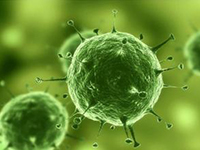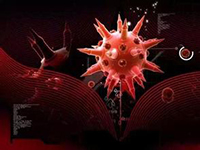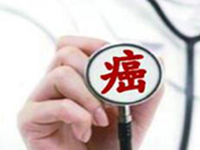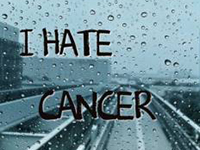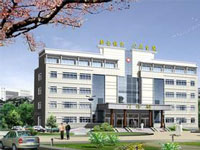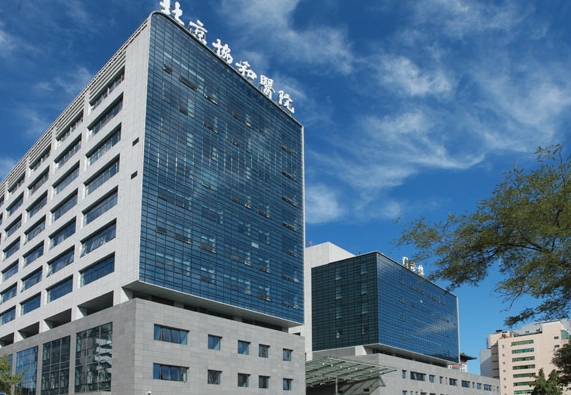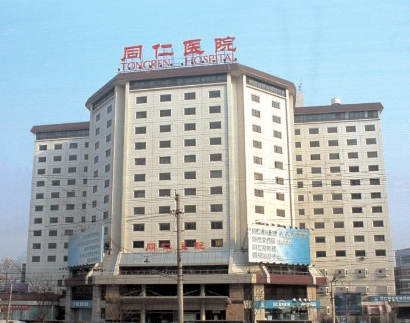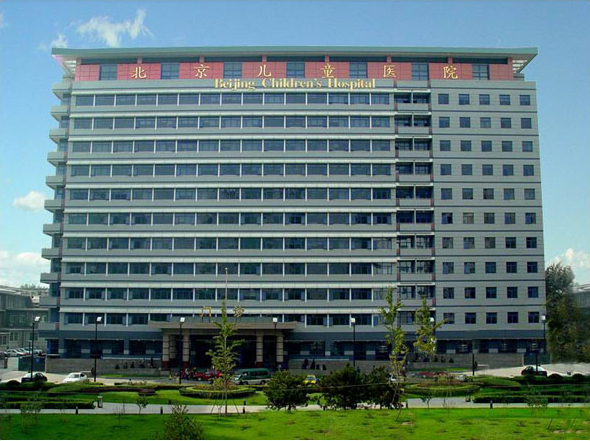有关子宫内膜癌的几个热点问题
子宫内膜癌是最常见的妇科恶性肿瘤之一,根据美国癌症协会的资料美国2005年新发病例为40,880例,同时将有7,310例患者将死于本病[1、2]。在中国虽然没有较详尽的统计数字,但是至少本病的发生也有逐年增高的趋势,所以有必要明确一些和子宫内膜癌发生、发展有关的问题,以便早期发现、早期治疗。本文所涉及的这些问题也许对于本病的预防有些帮助。我们想从以下几个方面逐一阐述子宫内膜癌与外源性激素、三苯氧胺、肥胖和体重指数、身体锻炼、饮食以及哺乳的关系。北京协和医院妇科吴鸣
一、 子宫内膜癌与外源性激素的关系
(一)、雌激素替代治疗
在世界范围内首次报道了雌激素替代治疗伴随着子宫内膜癌的发病增加是在上世纪七十年代中叶[3],很快这个研究成果得到了另外两个研究的证实[4、5],并且发现雌激素替代治疗的妇女发生子宫内膜癌总的危险指数(overall risk ratio)达到4.5 to 8.0。随后的一些研究进一步证实了以上的观点,并且发现如果雌激素替代治疗达到5年以上时,其发生子宫内膜癌的危险将增高10-30倍[6-8]。甚至有人指出一旦应用雌激素替代治疗达到一年以上时,即使停药,其导致子宫内膜癌的危险仍将持续10年以上[9]。十分有趣的是当这样类似的结果公布于众后,雌激素替代治疗的人数骤减,同时子宫内膜癌的发病率也随之下降[10]。
(二)、雌孕激素联合替代治疗
很多年来,人们已经注意到了绝经后妇女应用雌激素会导致内膜的过度增生的现象,而这种过渡增生很大程度上可能会在以后发展成为子宫内膜癌[11]。而长期以来,人们也一直利用孕激素来治疗与子宫相关的肿瘤病变,如子宫内膜不典型增生、原位癌、子宫内膜癌及其转移病变[12-14]。由于越来越多的同道渐渐的认识到了雌激素替代治疗与子宫内膜癌发生的关系,因此,在临床上逐渐将研究的重点转移到利用雌孕激素联合进行激素替代治疗方面[15、16]。
首先需要介绍的一个著名的临床试验,叫做绝经后雌孕激素干预试验(Postmenopausal Estrogen Progestin Interventions Trial ,PEPI ),第一次明确地研究了激素对于子宫的影响。这个试验有将近600个参试者,历时3年,是个多中心、双盲、对照的随机试验,除安慰剂组外,一组每天仅给予结合雌激素(conjugated equine estrogen,CEE),其他三组除了给予CEE外,还分别加用安宫黄体酮medroxyprogesterone acetate (MPA)、微粒化孕酮(micronized progesterone,MP)(分别于28天周期的前12天应用)和MP持续应用组。实验前所有参试者均进行了内膜活检,以后每年及/或出现了临床异常症状时进行内膜活检,结果发现加用孕激素组子宫内膜过度增生的发生机会与安慰剂组相似,而CEE组与安慰剂组相比内膜病变的发生率明显增高,具体发生单纯增生、腺瘤样增生和不典型增生的机会分别为27.7%/0.8%、22.7%/0.8%,、和11.8%/0%。这些数据说明每天给予0.625 mg的CEE会引起子宫内膜的过度增生,而这种异常情况可以通过同时加用MPA或 MP加以预防[17]。
早期的研究证明内膜的过度增生是子宫内膜癌的癌前病变。Kurman RJ等进行了一项回顾性研究,研究包括170例子宫内膜过度增生的患者,平均随诊13.4年,结果发现发展成子宫内膜癌的危险取决于内膜增生的类型,没有间变的内膜增生癌变率仅有2%,而不典型增生的内膜发生癌变的机率却为23%[18]。而这些子宫内膜癌通常是属于分化较好,很少发生肌层浸润,因此,有人认为子宫内膜的异常增生,尤其是伴有不典型增生,常被认为是某些分化较好的子宫内膜癌的癌前病变[19]。
另外一项非常有意义的研究明确地阐述了联合雌孕激素对于子宫内膜癌发生危险的影响,这项试验来自于有16,609妇女参试的妇女健康启动研究(Women’s Health Initiative)这是一项随机的前瞻性研究,平均随诊5.6年,与安慰剂组相比,激素联合组发生子宫内膜癌的危险比率(hazard ratio)仅为0.81(95% CI, 0.48-1.36),同时本研究至少说明联合激素替代治疗并不会增加子宫内膜癌的发生危险[20]。在洛杉矶进行的一项大规模的临床试验证实在雌孕激素序贯替代治疗中每月加用孕激素至少10天可以有效的减少由于雌激素替代治疗所导致的子宫内膜癌发生率的增加。这项研究发现对于接受雌激素替代治疗的妇女每5年其发生癌变的风险明显增加,其OR(odds ratio)是2.17 (95% CI, 1.91-2.47);而对于应用每月少于10天的孕激素进行序贯雌孕激素替代治疗的患者,每5年应用发生癌的机会有轻微的升高,其OR为1.87 (95% CI, 1.32-2.65);而与之相对应,如果将以上的孕激素的治疗超过每月10天的话,那么癌变机会将不会增加,其OR 仅为1.07 (95% CI, 0.82-1.41)[21]。另外一个大规模的临床研究其结果和以上的结果不尽相同,对于那些应用雌孕激素替代治疗达5年以上的患者,如果每月孕激素应用少于10天,其发生子宫内膜癌的危险将增高3.7倍(95% CI, 1.7-8.2),而当每月孕激素应用即使超过10天时,其发生子宫内膜癌的危险仍增高2.5倍(95% CI, 1.1-5.5)[22]。瑞典的一项临床试验发现,对于应用雌激素进行激素替代治疗达6年或以上,发生子宫内膜癌的相对危险将达到4.2 (95% CI, 2.5-8.4),而如果在治疗期间加用孕激素时,其危险并没有明显升高,其RR仅为1.4 (95% CI, 0.6-3.3)。
(三)、口服避孕药
口服避孕药(Combination oral contraceptives,COC)对于绝经前的妇女的子宫内膜有着明显的保护作用已经是不争的事实了[24]。对于每周期28天的患者应用21天的由雌孕激素联合的口服避孕药是常用的服药方法,并且发现在停药的几天中内源性雌激素仍然能够维持较低的水平,通过大量的临床试验证实应用口服避孕药,发生子宫内膜癌的危险可以下降近40%,即使已经停用口服避孕药,而这种对于内膜的保护作用将至少持续存在15年[24-26]。
大量的临床研究证实口服避孕药对于子宫内膜的保护作用将随着应用时间的延长而增强,发生内膜癌的危险随着应用口服避孕药的时间延长而下降。总之,应用口服避孕药达4年时,发生子宫内膜癌的危险将下降56%,应用8年,将下降67%,应用12年将下降72%。而且值得注意的是一项随诊9年前瞻的研究发现发生子宫内膜癌的相对危险下降了80%[27]。一项瑞典的研究报告发现,无论应用哪种口服避孕药,其子宫内膜癌发生的危险将下降30% (OR = 0.7, 95% CI, 0.5-0.9),如果单独应用孕激素,其发生内膜癌的危险将进一步下降,约为60% (OR = 0.4, 95% CI, 0.2-1.4)。如果应用COC达到或超过3年,OR值将达到0.5 (95% CI, 0.3-0.7),如果应用COC达10年或以上,OR值将达0.2 (95% CI, 0.1-0.4)。即应用口服避孕药一年,发生子宫内膜癌的危险将下降10%[28]。
二、子宫内膜癌与三苯氧胺
三苯氧胺是一种选择性雌激素受体修饰剂SERMs (selective estrogen receptor modulators),在不同的靶器官可以表现不同的作用,即可表现出类雌激素作用,也可表现为抗雌激素作用。1985年开始人们注意到了乳腺癌患者术后应用三苯氧胺后发生子宫内膜癌的现象[29],这个结果被随后进行的应用三苯氧胺治疗和预防乳腺癌的随机临床实验所证实[30-34]。
1989年发表的一个瑞典的研究报告,主要随机比较乳腺癌术后是否给予三苯氧胺辅助治疗发生子宫内膜癌的机会,研究包括了1,846例患者,中位随诊4.5年,结果发现接受三苯氧胺治疗的931例患者子宫内膜癌的发生病例增加,其相对危险RR达6.4[30]。丹麦的一项研究发现,乳腺癌患者应用三苯氧胺治疗其子宫内膜癌的发生率为1%,而未用三苯氧胺的患者其发生率仅为0.3%[31]。斯堪地那维亚的一项包括4,914例患者随诊8-9年研究发现,应用三苯氧胺的患者发生子宫内膜癌的相对危险RR为4.1[32]。NSABP B-14临床试验共有1,400例淋巴结阴性的乳腺癌患者参加试验,随机分组给予三苯氧胺和安慰剂,结果三苯氧胺组发生子宫内膜癌的危险1.6/1,000/年,相对危险RR为7.5,但是安慰剂组仅为0.2/1,000/年[35]。另外一个NSABP的乳腺癌预防试验P-1也发现乳腺癌病人给予三苯氧胺组与安慰剂组相对比更易患子宫内膜癌,三苯氧胺组子宫内膜癌的年发病率为2.3 /1,000,而安慰剂组仅为0.91/1,000。并且这种易患子宫内膜癌的危险性与绝经状态相关,如年龄不超过50岁的患者其RR为1.21 (95% CI, 0.41-3.60),而年龄超过50岁的患者发生内膜癌的RR为4.01 (95% CI, 1.70-10.90)。幸运的是三苯氧胺组发生的子宫内膜癌均是I期(FIGO)的,而安慰剂组14/15(93%)为I期的[36]。另外的一项研究发现乳腺癌的患者应用三苯氧胺达2年以上时,其发生子宫内膜癌的RR达2.3(95% CI, 0.9-5.9).,同时,这项研究发现子宫内膜癌的发生和应用三苯氧胺的时间和累积用量相关[33]。一项大规模的临床研究发现如果应用三苯氧胺的时间少于2年的话,发生子宫内膜癌的机会并不增加(OR = 0.6, 95% CI, 0.2-1.9)[34]。
目前还不清楚应用三苯氧胺与否是否和不良的病理类型子宫内膜癌有关。这个问题首先是由耶鲁大学的一位学者提出,他的研究报道了53例乳腺癌患者后患子宫内膜癌的病例,其中15例患者每天服三苯氧胺40mg,而应用三苯氧胺的患者中,67%的子宫内膜癌分化较差或合并有不良的病理类型(如UPSC、透明细胞癌或者混合苗勒氏管类型)[37]。荷兰的一项研究包括309例乳腺癌患者后来患子宫内膜癌的病例,同时以860例子宫内膜癌病例进行对照,结果发现三苯氧胺的应用使得乳腺癌患者子宫内膜癌的发生危险增加,并且同时使得发生更高的分期、更差的组织学类型、更差的预后的危险增加[38]。在NSABP B-14实验中作者也对于组织学结果进行了探讨,在这个瑞典的研究中描述了17例乳腺癌患者后患子宫内膜癌的临床病理情况,发现绝大多数细胞分化是属于较好的,这些患者的10年生存率为73%,除一例为IV期外,其余均是I期[39]。
雷洛西芬或拉乐西芬(Raloxifene)是第二代选择性雌激素受体修饰剂,目前已经在预防绝经后骨质疏松方面获得批准而应用于临床,和三苯氧胺不同,它对于子宫没有雌激素作用,目前的大规模随机临床试验证实雷洛西芬可以改善雌激素受体阳性的乳腺癌的预后, 同时也不伴有子宫内膜癌发生的危险增加(RR = 0.8, 95% CI, 0.2-2.7)[40]。
三、子宫内膜癌与肥胖及体重指数
很多的研究发现子宫内膜癌的发病危险随着体重指数增高和体重的增加而增高,这些研究测量肥胖的方法很多,如体重、体重指数(BMI)、腰腿围比(waist-to-thigh circumference ratio)、腰臀围比(waist-to-hip circumference ratio)等[41]。
肥胖的妇女子宫内膜癌发生机会增加主要原因可能和血中雌激素水平较高有关,而雌激素恰恰是子宫内膜癌很明确的发病原因[42]。首先,血清雌酮水平较高,而雌酮是存在于皮下脂肪组织中的雄烯二酮芳香化的产物,因此增加了雌激素的产生。另外,肥胖通常伴有体内性激素结合球蛋白(sex hormone-binding globulin ,SHBG)水平的下降,因此,血中游离雌激素也升高[43]。
肥胖常伴有几个增加子宫内膜癌患病的危险因素,如向心性肥胖、多囊卵巢综合征、活动过少和高饱和脂肪饮食等[44]。既往的研究表明体重是子宫内膜癌发病的危险因素,在一项欧洲进行的研究发现26%-47%的子宫内膜癌可能和体重过重和肥胖有关,类似的试验也得出同样的结果那就是子宫内膜癌和体重过重有关,肥胖发生子宫内膜癌的相对危险是2-10[45],一些研究发现即使您考虑到BMI的影响,向心性肥胖发生子宫内膜癌的危险高于外周性肥胖[46-48]。甚至一些研究还发现晚胖比早胖与子宫内膜癌关系更密切[49-55]。
肥胖导致子宫内膜癌的病因学基础目前还不完全清楚,很多人提出有关的机制,根据雌激素理论,绝经后妇女血浆中雌激素的主要是来源于体内雄烯二酮的芳香化,而这个过程主要发生于皮下脂肪。这也许可以解释为什么晚期发胖和子宫内膜癌的发生有关[56]。另外,有人认为向心性肥胖易发生子宫内膜癌也许和高胰岛素血症有关[57]。
既然很多研究发现肥胖和子宫内膜癌的发生有关,那么减肥是否可以改变子宫内膜癌的发生危险,这一点非常重要。为了研究这个问题,有人对于参加美国爱荷华州妇女健康研究项目的参加者进行研究,目的是了解强化减肥和子宫内膜癌发病率的关系,这项试验包括21,7 07名绝经后妇女,结果发现强化减肥20镑以上和从没有达到20磅的妇女相比发生子宫内膜癌的相对危险没有明显的减少。(RR = 0.93, 95% CI, 0.60-1.44)。但是,这篇文章没有得到是否减肥和保持体重可以减少肥胖患者发生子宫内膜癌的危险性[58]。
四、子宫内膜癌与体育锻炼
有关体育锻炼和子宫内膜癌的发生危险的研究很多,其结果证明似乎两者存在着负相关,然而,因为这些研究对于体育锻炼采用的标准不统一,将这些研究在一起进行比较确实非常困难的。
荷兰的一项大组的研究发现绝经后妇女每天锻炼超过90分钟与少于30分钟的相比,子宫内膜发生危险减少46% (RR = 0.54, 95% CI, 0.34-0.85)[59]。另外一项研究将822例子宫内膜癌患者与1,111正常人进行对照研究,当将发生子宫内膜癌前2年期间规律锻炼和根本不锻炼的妇女相比,子宫内膜癌的发生危险下降38%(OR = 0.62, 95% CI, 0.51-0.76)。但是却不能提示锻炼的强度以及时间和子宫内膜癌发生危险的关系[60]。另外一项关于乳腺癌的前瞻性研究发现近期的体育锻炼似乎不能减少子宫内膜癌的发生危险[61]。
因此有人提出体育锻炼之所以可以减少肥胖妇女子宫内膜癌的发生危险,是因为通过减肥(已知的子宫内膜癌的危险因素)或者减少血清中雌酮的水平而达到修饰肥胖患者子宫内膜癌的发生危险[62]。
五、子宫内膜癌与母乳喂养
众所周知,生育可以降低子宫内膜癌的发生危险,而哺乳通过抑制排卵也同样能够减少子宫内膜癌的发生危险。
墨西哥的一项研究发现延长哺乳时间可以减少子宫内膜癌的发生危险达58%-72%。同样母乳喂养孩子的多少也存在同样的规律[63]。美国的一项关于母乳喂养和子宫内膜癌的关系的研究指出过去30年来的母乳喂养使得子宫内膜癌的发生危险下降,其OR为0.58 (95% CI, 0.36-0.96),而且如果初次哺乳在30岁以后的话,子宫内膜癌发生的危险将下降50%[64]。
六、子宫内膜癌与膳食
关于膳食和子宫内膜癌的关系的研究较少,但是尽管如此,得到的结果却出奇地相似,那就是食用低饱和脂肪饮食和多食水果蔬菜可以降低发生子宫内膜癌的危险[65、66],另外,两项研究发现经常食用豆类食品也可以减少子宫内膜癌的发生危险[67]。
参考文献
1. American Cancer Society.: Cancer Facts and Figures 2005. Atlanta, Ga: American Cancer Society, 2005. Last accessed May 20, 2005.
2. American Cancer Society.: Detailed Guide: Endometrial Cancer: What are the Risk Factors for Endometrial Cancer? Atlanta, Ga: American Cancer Society, 2005. Last accessed May 23, 2005.
3. Smith DC, Prentice R, Thompson DJ, et al.: Association of exogenous estrogen and endometrial carcinoma. N Engl J Med 293 (23): 1164-7, 1975.
4. Mack TM, Pike MC, Henderson BE, et al.: Estrogens and endometrial cancer in a retirement community. N Engl J Med 294 (23): 1262-7, 1976.
5. Ziel HK, Finkle WD: Increased risk of endometrial carcinoma among users of conjugated estrogens. N Engl J Med 293 (23): 1167-70, 1975. Walker AM, Jick H: Cancer of the corpus uteri: increasing incidence in the United States, 1970--1975. Am J Epidemiol 110 (1): 47-51, 1979.
6. Gray LA Sr, Christopherson WM, Hoover RN: Estrogens and endometrial carcinoma. Obstet Gynecol 49 (4): 385-9, 1977.
7. McDonald TW, Annegers JF, O'Fallon WM, et al.: Exogenous estrogen and endometrial carcinoma: case-control and incidence study. Am J Obstet Gynecol 127 (6): 572-80, 1977.
8. Antunes CM, Strolley PD, Rosenshein NB, et al.: Endometrial cancer and estrogen use. Report of a large case-control study. N Engl J Med 300 (1): 9-13, 1979.
9. Shapiro S, Kelly JP, Rosenberg L, et al.: Risk of localized and widespread endometrial cancer in relation to recent and discontinued use of conjugated estrogens. N Engl J Med 313 (16): 969-72, 1985.
10. Austin DF, Roe KM: The decreasing incidence of endometrial cancer: public health implications. Am J Public Health 72 (1): 65-8, 1982.
11. Gusberg SB: Precursors of corpus carcinoma estrogens and adenomatous hyperplasia. Am J Obstet Gynecol 54(6): 905-927, 1947.
12. Gusberg SB: Hormone-dependence of endometrial cancer. Obstet Gynecol 30 (2): 287-93, 1967.
13. Bonte J: Medroxyprogesterone in the management of primary and recurrent or metastatic uterine adenocarcinoma. Acta Obstet Gynecol Scand Suppl 19: 21-4, 1972.
14. Kistner RW: Histological effects of progestins on hyperplasia and carcinoma in situ of the endometrium. Cancer 12(6): 1106-1122, 1959.
15. Whitehead MI: The effects of oestrogens and progestogens on the postmenopausal endometrium. Maturitas 1 (2): 87-98, 1978.
16. Hammond CB, Jelovsek FR, Lee KL, et al.: Effects of long-term estrogen replacement therapy. II. Neoplasia. Am J Obstet Gynecol 133 (5): 537-47, 1979.
17. Effects of hormone replacement therapy on endometrial histology in postmenopausal women. The Postmenopausal Estrogen/Progestin Interventions (PEPI) Trial. The Writing Group for the PEPI Trial. JAMA 275 (5): 370-5, 1996.
18. Kurman RJ, Kaminski PF, Norris HJ: The behavior of endometrial hyperplasia. A long-term study of "untreated" hyperplasia in 170 patients. Cancer 56 (2): 403-12, 1985.
19. Kelloff GJ, Johnson JR, Crowell JA, et al.: Approaches to the development and marketing approval of drugs that prevent cancer. Cancer Epidemiol Biomarkers Prev 4 (1): 1-10, 1995
20. Anderson GL, Judd HL, Kaunitz AM, et al.: Effects of estrogen plus progestin on gynecologic cancers and associated diagnostic procedures: the Women's Health Initiative randomized trial. JAMA 290 (13): 1739-48, 2003.
21. Pike MC, Peters RK, Cozen W, et al.: Estrogen-progestin replacement therapy and endometrial cancer. J Natl Cancer Inst 89 (15): 1110-6, 1997.
22. Beresford SA, Weiss NS, Voigt LF, et al.: Risk of endometrial cancer in relation to use of oestrogen combined with cyclic progestagen therapy in postmenopausal women. Lancet 349 (9050): 458-61, 1997.
23. Persson I, Weiderpass E, Bergkvist L, et al.: Risks of breast and endometrial cancer after estrogen and estrogen-progestin replacement. Cancer Causes Control 10 (4): 253-60, 1999.
24. Combination oral contraceptive use and the risk of endometrial cancer. The Cancer and Steroid Hormone Study of the Centers for Disease Control and the National Institute of Child Health and Human Development. JAMA 257 (6): 796-800, 1987.
25. Ramcharan S, Pellegrin FA, Ray R, et al.: The Walnut Creek Contraceptive Drug Study: A Prospective Study of the Side Effects of Oral Contraceptives. Vol 3. Bethesda, Md: US Government Printing Office, 1981, NIH Pub. No 81-564.
26. Beral V, Hannaford P, Kay C: Oral contraceptive use and malignancies of the genital tract. Results from the Royal College of General Practitioners' Oral Contraception Study. Lancet 2 (8624): 1331-5, 1988.
27. Schlesselman JJ: Risk of endometrial cancer in relation to use of combined oral contraceptives. A practitioner's guide to meta-analysis. Hum Reprod 12 (9): 1851-63, 1997.
28. Weiderpass E, Adami HO, Baron JA, et al.: Use of oral contraceptives and endometrial cancer risk (Sweden). Cancer Causes Control 10 (4): 277-84, 1999.
29. Killackey MA, Hakes TB, Pierce VK: Endometrial adenocarcinoma in breast cancer patients receiving antiestrogens. Cancer Treat Rep 69 (2): 237-8, 1985.
30. Fornander T, Rutqvist LE, Cedermark B, et al.: Adjuvant tamoxifen in early breast cancer: occurrence of new primary cancers. Lancet 1 (8630): 117-20, 1989.
31. Andersson M, Storm HH, Mouridsen HT: Incidence of new primary cancers after adjuvant tamoxifen therapy and radiotherapy for early breast cancer. J Natl Cancer Inst 83 (14): 1013-7, 1991.
32. Rutqvist LE, Mattsson A: Cardiac and thromboembolic morbidity among postmenopausal women with early-stage breast cancer in a randomized trial of adjuvant tamoxifen. The Stockholm Breast Cancer Study Group. J Natl Cancer Inst 85 (17): 1398-406, 1993.
33. van Leeuwen FE, Benraadt J, Coebergh JW, et al.: Risk of endometrial cancer after tamoxifen treatment of breast cancer. Lancet 343 (8895): 448-52, 1994.
34. Cook LS, Weiss NS, Schwartz SM, et al.: Population-based study of tamoxifen therapy and subsequent ovarian, endometrial, and breast cancers. J Natl Cancer Inst 87 (18): 1359-64, 1995.
35. Fisher B, Costantino JP, Redmond CK, et al.: Endometrial cancer in tamoxifen-treated breast cancer patients: findings from the National Surgical Adjuvant Breast and Bowel Project (NSABP) B-14. J Natl Cancer Inst 86 (7): 527-37, 1994
36. Fisher B, Costantino JP, Wickerham DL, et al.: Tamoxifen for prevention of breast cancer: report of the National Surgical Adjuvant Breast and Bowel Project P-1 Study. J Natl Cancer Inst 90 (18): 1371-88, 1998.
37. Magriples U, Naftolin F, Schwartz PE, et al.: High-grade endometrial carcinoma in tamoxifen-treated breast cancer patients. J Clin Oncol 11 (3): 485-90, 1993.
38. Bergman L, Beelen ML, Gallee MP, et al.: Risk and prognosis of endometrial cancer after tamoxifen for breast cancer. Comprehensive Cancer Centres' ALERT Group. Assessment of Liver and Endometrial cancer Risk following Tamoxifen. Lancet 356 (9233): 881-7, 2000.
39. Fornander T, Hellström AC, Moberger B: Descriptive clinicopathologic study of 17 patients with endometrial cancer during or after adjuvant tamoxifen in early breast cancer. J Natl Cancer Inst 85 (22): 1850-5, 1993.
40. Cummings SR, Eckert S, Krueger KA, et al.: The effect of raloxifene on risk of breast cancer in postmenopausal women: results from the MORE randomized trial. Multiple Outcomes of Raloxifene Evaluation. JAMA 281 (23): 2189-97, 1999.
41. Purdie DM, Green AC: Epidemiology of endometrial cancer. Best Pract Res Clin Obstet Gynaecol 15 (3): 341-54, 2001.
42. Enriori CL, Reforzo-Membrives J: Peripheral aromatization as a risk factor for breast and endometrial cancer in postmenopausal women: a review. Gynecol Oncol 17 (1): 1-21, 1984.
43. Davidson BJ, Gambone JC, Lagasse LD, et al.: Free estradiol in postmenopausal women with and without endometrial cancer. J Clin Endocrinol Metab 52 (3): 404-8, 1981.
44. Troisi R, Potischman N, Hoover RN, et al.: Insulin and endometrial cancer. Am J Epidemiol 146 (6): 476-82, 1997.
45. Bergström A, Pisani P, Tenet V, et al.: Overweight as an avoidable cause of cancer in Europe. Int J Cancer 91 (3): 421-30, 2001.
46. Purdie DM, Green AC: Epidemiology of endometrial cancer. Best Pract Res Clin Obstet Gynaecol 15 (3): 341-54, 2001
47. Elliott EA, Matanoski GM, Rosenshein NB, et al.: Body fat patterning in women with endometrial cancer. Gynecol Oncol 39 (3): 253-8, 1990.
48. Schapira DV, Kumar NB, Lyman GH, et al.: Upper-body fat distribution and endometrial cancer risk. JAMA 266 (13): 1808-11, 1991.
49. Swanson CA, Potischman N, Wilbanks GD, et al.: Relation of endometrial cancer risk to past and contemporary body size and body fat distribution. Cancer Epidemiol Biomarkers Prev 2 (4): 321-7, 1993 Jul-Aug.
50. Elliott EA, Matanoski GM, Rosenshein NB, et al.: Body fat patterning in women with endometrial cancer. Gynecol Oncol 39 (3): 253-8, 1990.
51. Schapira DV, Kumar NB, Lyman GH, et al.: Upper-body fat distribution and endometrial cancer risk. JAMA 266 (13): 1808-11, 1991.
52. Olson SH, Trevisan M, Marshall JR, et al.: Body mass index, weight gain, and risk of endometrial cancer. Nutr Cancer 23 (2): 141-9, 1995.
53. Weiderpass E, Persson I, Adami HO, et al.: Body size in different periods of life, diabetes mellitus, hypertension, and risk of postmenopausal endometrial cancer (Sweden). Cancer Causes Control 11 (2): 185-92, 2000.
54. Le Marchand L, Wilkens LR, Mi MP: Early-age body size, adult weight gain and endometrial cancer risk. Int J Cancer 48 (6): 807-11, 1991.
55. Elliott EA, Matanoski GM, Rosenshein NB, et al.: Body fat patterning in women with endometrial cancer. Gynecol Oncol 39 (3): 253-8, 1990.
56. Enriori CL, Reforzo-Membrives J: Peripheral aromatization as a risk factor for breast and endometrial cancer in postmenopausal women: a review. Gynecol Oncol 17 (1): 1-21, 1984
57. Stoll BA: New metabolic-endocrine risk markers in endometrial cancer. Br J Obstet Gynaecol 106 (5): 402-6, 1999.
58. Parker ED, Folsom AR: Intentional weight loss and incidence of obesity-related cancers: the Iowa Women's Health Study. Int J Obes Relat Metab Disord 27 (12): 1447-52, 2003.
59. Schouten LJ, Goldbohm RA, van den Brandt PA: Anthropometry, physical activity, and endometrial cancer risk: results from the Netherlands Cohort Study. J Natl Cancer Inst 96 (21): 1635-8, 2004.
60. Littman AJ, Voigt LF, Beresford SA, et al.: Recreational physical activity and endometrial cancer risk. Am J Epidemiol 154 (10): 924-33, 2001.
61. Colbert LH, Lacey JV Jr, Schairer C, et al.: Physical activity and risk of endometrial cancer in a prospective cohort study (United States). Cancer Causes Control 14 (6): 559-67, 2003.
62. Cauley JA, Gutai JP, Kuller LH, et al.: The epidemiology of serum sex hormones in postmenopausal women. Am J Epidemiol 129 (6): 1120-31, 1989.
63. Salazar-Martinez E, Lazcano-Ponce EC, Gonzalez Lira-Lira G, et al.: Reproductive factors of ovarian and endometrial cancer risk in a high fertility population in Mexico. Cancer Res 59 (15): 3658-62, 1999.
64. Newcomb PA, Trentham-Dietz A: Breast feeding practices in relation to endometrial cancer risk, USA. Cancer Causes Control 11 (7): 663-7, 2000.
65. Littman AJ, Beresford SA, White E: The association of dietary fat and plant foods with endometrial cancer (United States). Cancer Causes Control 12 (8): 691-702, 2001.
66. McCann SE, Freudenheim JL, Marshall JR, et al.: Diet in the epidemiology of endometrial cancer in western New York (United States). Cancer Causes Control 11 (10): 965-74, 2000. Horn-Ross PL, John EM, Canchola AJ, et al.: Phytoestrogen intake and endometrial cancer risk. J Natl Cancer Inst 95 (15): 1158-64, 2003.
67. Xu WH, Zheng W, Xiang YB, et al.: Soya food intake and risk of endometrial cancer among Chinese women in Shanghai: population based case-control study. BMJ 328 (7451): 1285, 2004.
- 上一篇:子宫内膜癌术后阴道出血、腿肿正常吗?
- 下一篇:绝经后阴道出血 ―小心子宫内膜癌
- 本文延伸阅读
相关文章
- 子宫内膜癌治疗中药有哪些
- 子宫内膜癌术后药物
- 子宫内膜癌治疗药物有哪些
- 子宫内膜癌手术后吃什么药
- 患上子宫内膜癌可以喝些怎样的中药
- 子宫内膜癌用什么中药治疗效果最好
- 子宫内膜癌是如何分期的?
- 子宫内膜癌:两药联合 vs 三药联合化疗
- 年轻的女孩为什么得了子宫内膜癌?如何早发现子宫内膜癌?
- 豆类食品预防子宫内膜癌的良药
- 子宫内膜癌全都割掉了也要复查?
- 肥胖、高血压、糖尿病的女性容易患子宫内膜癌!如何早期发现...
- 热门阅读
- 热点排行
- 对于子宫内膜癌患者应该怎样进行护理...
- 子宫内膜癌患者如何健康饮食
- 如何预防子宫内膜癌呀
- 患上子宫内膜癌常见的治疗方法
- 子宫内膜癌有哪些治疗方法?
- 检查子宫内膜癌可以通过哪些方法呢?
- 容易与子宫内膜癌混淆的六类疾病
- 子宫内膜癌的具体危害是什么
免费提问



